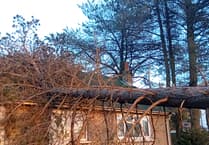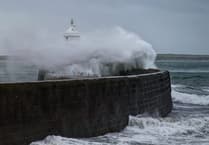More of the island's electricity is going to be created by wind and solar power.
Work has started on a programme to decarbonise the Isle of Man’s electricity supply by 2030.
Manx Utilities has received Council of Ministers approval for its plans to begin construction projects which will see up to 30 megawatts of electricity produced from onshore wind and solar energy by 2026.
A statement from the government reads: 'Energy security is also a factor in the drive to diversify the Island’s energy mix, which has been brought into sharp focus with the conflict in Ukraine and the subsequent volatility in the energy markets.
'Concerns over the global supply of gas – used to generate most of the island’s electricity – have seen prices reach record highs, fuelling inflation and putting pressure on energy bills.
Chief Minister Alfred Cannan MHK said: 'Events over the past year have brought into sharp focus the importance of energy security and the risks of volatility in the energy markets. It has also highlighted the benefits of investing in alternative ways of generating electricity.
'Harnessing the power of the sun and the wind will mean we can utilise our Island’s natural resources to reduce carbon emissions whilst making the Isle of Man less reliant on imported fossil fuels.'
Chair of Manx Utilities Tim Johnston MHK, who was also appointed Minister for Enterprise yesterday, said: “Currently, electricity demand in the Isle of Man averages at around 40 megawatts and peaks at about 75 megawatts in winter, but can fall to as low as 25 megawatts at night during the summer.
'With the help of independent specialist consultants, Manx Utilities has undertaken detailed work to determine the best approach to increasing the island’s use of renewable energy whilst not compromising supply security and the needs of its customers.
'To meet the programme deadlines, sites in public ownership are being targeted for installing solar panels.
'This will involve the use of car parks and government buildings. Subject to planning approvals, wind turbines could be built on publicly owned sites focussing on areas where the wind yield is likely to be highest.'
More information on the programme can be found at netzero.im.





Comments
This article has no comments yet. Be the first to leave a comment.